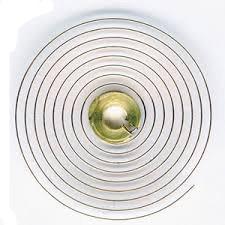-
Recently Browsing
- No registered users viewing this page.
-
Topics
-
Posts
-
Compression Spring Various Size. This might be helpful. I have watch furniture restorers and how they go about this problem, they inject glue underneath with a syringe and clamp it, leave over night. Next day remove clamp and it smooth. You could use an iron but be careful not to burn the wood. https://www.ebay.co.uk/itm/265697329513?chn=ps&_ul=GB&var=565484998457&_trkparms=ispr%3D1&amdata=enc%3A1jd_-94ilTHWZLQ3PxHeC1A73&norover=1&mkevt=1&mkrid=710-134428-41853-0&mkcid=2&mkscid=101&itemid=565484998457_265697329513&targetid=1647205088320&device=c&mktype=pla&googleloc=1006662&poi=&campaignid=17206177401&mkgroupid=136851690655&rlsatarget=pla-1647205088320&abcId=9300866&merchantid=119334104&gad_source=1&gclid=Cj0KCQjwir2xBhC_ARIsAMTXk849TnBArEYdgv1DpHf_somCZYmB7ViqD3UtvNJJc_dn4kj0AFxBXngaArSAEALw_wcB
-
By Neverenoughwatches · Posted
🤣 i think your first statement is rather dramatic, but i will take it in good humour. I think the thread speaks for itself John. What we are aiming for and when i say we, thats not actually that many that have spoke up. Is to have a back up plan to keep members in touch in case the forum ever disappears. So in essence yes the group has maybe taken on a life of its own and would like to remain together forever ( 🤣 i can also be dramatic ) maybe more members need to give some input of how they feel about it or say they are just not that bothered. Either way at least the question gets answered. Can i ask what the forum means to you and how you would feel without it ? Thats one answer Rich from one person, without knowing how others feel the thread was just a waste of time. -
you should go to the European patent office and look up watch patents. I'm guessing it's probably impossible to make anything related to watches without stepping on somebody's patent it's good that they expire with time. They've literally as far as I can tell patented everything and anything. this is why is pointing out their other formulas for the Epilam I'm pretty sure Rolex might have their own formula for instance. somewhere in the universe I was once reading things that were rejected for patents for basically this kind of thing. So yes there is rules on what can and cannot be patented but I'm sure things fall through the cracks.
-
Here is all the info on the 'Brocot' suspension block and regulating arbor. http://www.ian-partridge.co.uk/brocotsq.htm
-
I usually don't read new introductions but when you came to the group did you want to learn watch repair? The reason I ask is your watch seems so suffered some damage under your hands. And now you're ready to move on to a new patient and have you learned? I often relate watch repair like learning to be a doctor lots of practicing. Even though this is a damaged watch have you practice taking it apart and putting it together a whole bunch at times so you feel confident that the next watch you probably won't break anything? Then when watches were invented specifically pallet forks they didn't have epoxy glue which even if they did they wouldn't you used anyway because the pallet stones need to be moved around they need to be adjusted. so the substance of choice for holding pallet stones and roller jewel's in is shellac. It's a really interesting substance were if it's warmed up at melts the palace on can be moved around hopefully the correct position when it cools shellac hardens back up in the pallet stone will be held in place. If you're carefully could probably put your pallet stone back just warm up the fork carefully ideally there's a tool for this and your pallet stone would be fine.
-







Recommended Posts